|
Books Should Be Free Loyal Books Free Public Domain Audiobooks & eBook Downloads |
|
|
Books Should Be Free Loyal Books Free Public Domain Audiobooks & eBook Downloads |
|
Literature |
|---|
|
Book type:
Sort by:
View by:
|
By: Anna Katharine Green (1846-1935) | |
|---|---|
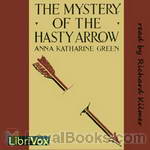 The Mystery of the Hasty Arrow
The Mystery of the Hasty Arrow
It is the noon hour at a museum in New York City. The date: May 23, 1913. The weekday, attendance is light; the attendees are scattered between two floors. Suddenly a cry rings out from the second floor. Scrambling to Section II, the museum director discovers a teenage girl dead with an arrow through her heart. An older woman hovers over her whispering incoherent phrases in the girl's ear and offering incomprehensible answers to the director's questions. She is the only witness to the crime, or accident, as the case may be... | |
 The Bronze Hand
The Bronze Hand
A political society secretly operates in Baltimore. When he tries to help his beautiful neighbor Miss Calhoun recover a stolen ring which might cause great unknown danger, Mr. Abbott is drawn into the midst of the conspiracy. (Introduction by Carolin) | |
 Circular Study
Circular Study
In this well-plotted, character-driven mystery, Detective Gryce receives a cryptic message calling him to the scene of a “strange” crime. He soon finds that the adjective is correct, for in a quiet brownstone house in a respectable New York City neighborhood, he finds the body of a man brutally stabbed to death, yet lovingly laid out on the floor of his study. The only apparent witnesses are a deaf and dumb butler driven mad by the event, and a caged bird that sings out a vital but puzzling clue... | |
 Forsaken Inn
Forsaken Inn
Told from the perspective of a Mrs. Truax, the owner of an inn during the time of the American and French Revolutions, "The Forsaken Inn" is a locked-room mystery that keeps readers guessing about what has happened. A young couple stays at the inn for the night, and goes on their way in the morning ... and several years later, the bride's body is found in a secret room of the inn. Yet, many people saw that bride leave with her husband. How can this be? Green tells her tale through Mrs. Truax' diary, and through letters and discussions with other characters who were friends of the young couple. An entertaining and highly recommended read. | |
 Agatha Webb
Agatha Webb
A universally beloved woman has been murdered. But who would have the heart to kill Agatha Webb? Would her husband do it for money matters? Or would it be the cook, who died at about the same time? Or would it be the rich and well-connected Mr. Fredrick, who ran away into the woods? This work is also for feminist fiction lovers. As the story starts right after the murder, we see how Miss Page, a servant at a rich house who is the sweetheart of the same Mr. Fredrick, wants to join the investigation- and is constantly prevented from doing so by conservative men. | |
 Mayor's Wife
Mayor's Wife
Miss Saunders is out for an adventure. One, which is full of secrets, hints, and half-lies. One, which will require all of her wits. She is to be the companion to the Mayor's wife. The Lady is unhappy, and the reason for her grave unhappiness is more serious than you think. | |
 Filigree Ball
Filigree Ball
[The Moore House] was standing when Washington was a village. It antedates the Capitol and the White House. Built by a man of wealth, it bears to this day the impress of the large ideas and quiet elegance of colonial times; but the shadow which speedily fell across it made it a marked place even in those early days. While it has always escaped the hackneyed epithet of "haunted," families that have moved in have as quickly moved out, giving as their excuse that no happiness was to be found there and that sleep was impossible under its roof... | |
 Chief Legatee
Chief Legatee
"I was married to-day in Grace Church. At the altar my bride--you probably know her name, Miss Georgian Hazen--wore a natural look, and was in all respects, so far as any one could see, a happy woman, satisfied with her choice and pleased with the éclat and elegancies of the occasion. Half-way down the aisle this all changed. I remember the instant perfectly. Her hand was on my arm and I felt it suddenly stiffen. I was not alarmed, but I gave her a quick look and saw that something had happened... | |
 Hermit of ---- Street
Hermit of ---- Street
Delight Hunter spends her days looking out of her window at her handsome but very mysterious and reclusive next door neighbor. She walks straight into a mystery when one day a fire starts in one of the upper rooms of his house and she dashes over to warn him, only to have him lock her in with instructions to let no one else in. Why is he so insistent that no one come in? What secrets are hidden within the walls of this house? | |
 Staircase at the Heart's Delight
Staircase at the Heart's Delight
Detective Ebenezer Gryce tells the story of the case with which he begun his career in 1840. Several wealthy men were drowned and washed ashore in New York City, and the first clue leads to a dubious money lender... | |
By: Eleanor Hallowell Abbott (1872-1958) | |
|---|---|
 The Indiscreet Letter
The Indiscreet Letter
Three fellow travelers on a train enter into a discussion concerning what they would call an ‘indiscreet letter.’ The discussion albeit short, produces some rather interesting revelations during the journey and at journey’s end. | |
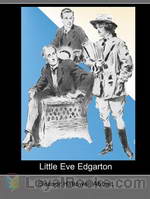 Little Eve Edgarton
Little Eve Edgarton
Eve Edgarton is not who she seems she is. A short encounter with Mr. Barton show that first impressions are not always right or indicative of one’s seemingly obvious preference or one’s proclivity. | |
By: Virginia Woolf (1882-1941) | |
|---|---|
 The Voyage Out
The Voyage Out
The Voyage Out is the first novel by Virginia Woolf, published in 1915 by Duckworth; and published in the U.S. in 1920 by Doran. One of Woolf's wittiest social satires.Rachel Vinrace embarks for South America on her father's ship and is launched on a course of self-discovery in a kind of modern mythical voyage. The mismatched jumble of passengers provide Woolf with an opportunity to satirize Edwardian life. The novel introduces Clarissa Dalloway, the central character of Woolf's later novel, Mrs... | |
 Jacob's Room
Jacob's Room
The novel centers, in a very ambiguous way, around the life story of the protagonist Jacob Flanders, and is presented entirely by the impressions other characters have of Jacob [except for those times when we do indeed get Jacob's perspective]. Thus, although it could be said that the book is primarily a character study and has little in the way of plot or background, the narrative is constructed as a void in place of the central character, if indeed the novel can be said to have a 'protagonist' in conventional terms. Motifs of emptiness and absence haunt the novel and establish its elegiac feel. | |
 Monday or Tuesday
Monday or Tuesday
Adeline Virginia Woolf was an English author, essayist, publisher, and writer of short stories, regarded as one of the foremost modernist literary figures of the twentieth century. During the interwar period, Woolf was a significant figure in London literary society and a member of the Bloomsbury Group. Her most famous works include the novels Mrs. Dalloway (1925), To the Lighthouse (1927), and Orlando (1928), and the book-length essay A Room of One's Own (1929), with its famous dictum, "A woman must have money and a room of her own if she is to write fiction... | |
By: John Galsworthy (1867-1933) | |
|---|---|
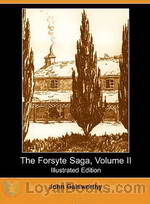 In Chancery (Vol. 2 of The Forsyte Saga)
In Chancery (Vol. 2 of The Forsyte Saga)
‘The Forsyte Saga’ is the story of a wealthy London family stretching from the eighteen-eighties until the nineteen-twenties. In Chancery is the second book in the saga. Five years have passed since Irene left Soames and the death of Bosinney. Old Jolyon meets Irene and is enchanted by her. At his death he leaves her a legacy sufficient for her to live an independent life in Paris. Soames, who is desperate for a son, attempts to effect a rapprochement but is rejected by her. Meanwhile Young Jolyon, now a widower who is Irene’s trustee, falls in love with her... | |
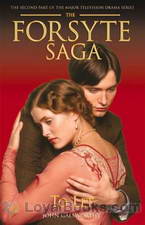 To Let (Vol. 3 of The Forsyte Saga)
To Let (Vol. 3 of The Forsyte Saga)
‘The Forsyte Saga’ is the story of a wealthy London family stretching from the eighteen-eighties until the nineteen-twenties. To Let is the third and final book in the saga (although Galsworthy later published two further trilogies which extend the story). We are now in 1920, about twenty years since Irene married Young Jolyon and gave birth to John and since Soames married Annette, who gave him a daughter, Fleur. The two sides of the family have not met since those times and John and Fleur do not even know of each other’s existence... | |
 Five Tales
Five Tales
This 1918 book consists of five short stories or novelettes by Galsworthy. They are The First and Last (1914), A Stoic, The Apple Tree (1916), The Juryman, Indian Summer of a Forsyte (1918) This last became part of the trilogy The Forsyte Saga. (Introduction by David Wales) | |
 Beyond
Beyond
Gyp, the daughter of ex-Major Charles Claire Winton, at the age of 23 marries Fiorsen, a Swedish violin virtuoso. Her mother, the wife of another man, has been Winton's mistress; she had died when Gyp was born. A highly sensitive child, Gyp has grown up in isolated surroundings with a kind, but very British, father. As she gets older her father tries to introduce her into society. An attack of gout takes him to Wiesbaden for a cure and, as he never goes anywhere without her, she accompanies him... | |
 Skin Game
Skin Game
A small play in three acts. A kind of comic tragedy. The plot tells the story of the interaction between two very different families in rural England just after the end of the First World War. Squire Hillcrist lives in the manor house where his family has lived for generations. He has a daughter, Jill, who is in her late teens; and a wife, Amy, as well as servants and retainers. He is "old money", although his finances are at a bit of low ebb. The other family is the "nouveau riche" Hornblowers,... | |
By: Kurt Vonnegut (1922-2007) | |
|---|---|
 2 B R 0 2 B
2 B R 0 2 B
In this chilling short-story by a master of the craft, Kurt Vonnegut creates a fictional world of the future where life and death are no longer matters of individual choice or destiny. The title refers to the famous quote from Hamlet, “To be or not to be....” with “0” being pronounced as “naught.” It also refers to the eternal dilemma of life and death that face every human being at some point in their lives. Written in 1962 it is set in some unspecified time in the future, when earth has become a Utopia... | |
By: Henry Wadsworth Longfellow | |
|---|---|
 Hiawatha
Hiawatha
I sing the Song of Hiawatha,Brave of heart and strong of arm.Daughter’s son of old Nokomis,Fathered by the harsh West Wind. With its regular, beating rhythm, the Song of Hiawatha has often been parodied, but in truth, it is a powerful, emotional epic; a hero’s life, his loves and suffering. The legends and traditions of the North American Indian swirl together through the tale like a mountain stream, tumbling white over the rocks, and caressing the mossy tree roots. | |
 Evangeline
Evangeline
Evangeline is one of Longfellow’s most popular poems and was once a great favorite with the American people. For many years almost every school child studied this poem during the middle school years. Although the decline of the reputation of the once-idolized poet has also brought neglect to this classic, it is still a very touching and expertly written work of art. It is based upon the tragic expulsion of the French settlers from Acadia (located in the Canadian maritime provinces) during the French & Indian War (1754-1763)... | |
 Tales of a Wayside Inn
Tales of a Wayside Inn
Mostly a collection of story-telling poems told by a group of friends in a tavern late one night. "Tales" includes the famous Paul Revere's ride, together with poems of many tales, countries and styles. | |
By: Gustave Flaubert (1821-1880) | |
|---|---|
 Three Short Works
Three Short Works
Here is a collection of strikingly different pieces by Flaubert: a prose poem in the voices of Death, Satan and Nero; the trials and apotheosis of a medieval saint; and the life of a selfless maid in 19th century France. Each exhibits the vigorous exactness, and the mixture of realism and romanticism, for which Flaubert is renowned. | |
 Salammbô
Salammbô
After completing the famous Mme Bovary, Flaubert put all his efforts into researching the Punic Wars and completed the lesser known Salammbô. In this volume, Flaubert describes in detail the Mercenary Revolt and the fight of the Mercenaries against the all-powerful Carthage, the theft of the magical Zaimph and the love and hate between the Carthaginian princess Salammbô and the fiercest leader of the Mercenaries, Matho. | |
By: John Donne (1572-1631) | |
|---|---|
 Devotions upon Emergent Occasions
Devotions upon Emergent Occasions
Devotions upon Emergent Occasions is a 1624 prose work by the English writer John Donne. It is a series of reflections that were written as Donne recovered from a serious illness, believed to be either typhus or relapsing fever. (Donne does not clearly identify the disease in his text.) The work consists of twenty-three parts describing each stage of the sickness. Each part is further divided into a Meditation, an Expostulation, and a Prayer. The seventeenth meditation is perhaps the best-known part of the work... | |
By: Honoré de Balzac (1799-1850) | |
|---|---|
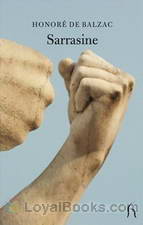 Sarrasine
Sarrasine
Published by Honoré de Balzac in the tempestuous year of 1830, the tale follows the undulating pathways of Sarrasine the sculptor’s shocking journey to his coming of age. As one of the “fathers of realism” Balzac painted with his words a vivid portrait of life in the swirling salons of Europe at the end of the Bourbon monarchy, and we follow Sarrasine from France to Italy in search of both his métier and his muse.However it is also the story of La Zambinella, an Italian singer with whom Sarrasine falls madly and passionately in love. But that passion holds a secret which Sarrasine spies too late. | |
 The Girl with the Golden Eyes
The Girl with the Golden Eyes
"Give me a feast such as men give when they love," she said, "and whilst I sleep, slay me..."Listeners who like to plunge straight into a story would do well to skip the lengthy preamble. Here, Balzac the virtuoso satirist depicts the levels of Parisian society as a version of the Inferno of Dante - but perhaps keeps the reader waiting too long for the first act of his operatic extravaganza.Our beautiful, androgynous hero, Henri de Marsay, is one of the bastard offspring of a depraved Regency milord and himself practises the cynical arts of the libertine... | |
 Farewell
Farewell
In his startling and tragic novella Farewell (‘Adieu’), Balzac adds to the 19th century’s literature of the hysterical woman: sequestered, confined in her madness; mute, or eerily chanting in her moated grange. The first Mrs Rochester lurks in the wings; the Lady of Shalott waits for the shadowy reflection of the world outside to shatter her illusion. Freud’s earliest patients will soon enter the waiting-room in their turn. Whilst out hunting two friends come across a strange waif-like woman shut up in a decaying chateau which one of them dubs “the Palace of the Sleeping Beauty”... | |
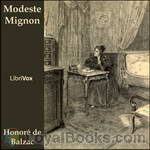 Modeste Mignon
Modeste Mignon
Modeste Mignon, a young provincial woman of romantic temperament, imagines herself to be in love with the famous Parisian poet Melchior de Canalis. However, he is not moved by her attentions. He invites his secretary Ernest de la Brière to "deal with the matter". Ernest answers Modeste's letters in his name and acts as her lover, disguised as Canalis. The scene changes dramatically when Ernest discoveres that Modest is, in fact, a rich heiress. Would he be able to win her heart despite his lie? | |
 Louis Lambert
Louis Lambert
Louis Lambert is an 1832 novel by French novelist and playwright Honoré de Balzac (1799–1850), included in the Études philosophiques section of his novel sequence La Comédie humaine. Set mostly in a school at Vendôme, it examines the life and theories of a boy genius fascinated by the Swedish philosopher Emanuel Swedenborg (1688–1772). Balzac wrote Louis Lambert during the summer of 1832 while he was staying with friends at the Château de Saché, and published three editions with three different titles... | |
 Father Goriot
Father Goriot
One of Balzac's most popular works, set around 1815 during the re-ascendancy of the Bourbon kings following the defeat of Napoleon. Said to have been an inspiration to Charles Dickens and Henry James as well as others, the novel seeks to portray the realism of scenes and people. It is also a commentary upon the changing social strata and mores of the day. | |
 Eugénie Grandet
Eugénie Grandet
Eugénie Grandet, first published in 1833, is one of Honoré de Balzac's finest novels, and one of the first works in what would become his large novel series titled La Comédie Humaine. Set in a provincial town in post-Revolutionary France, the story deals with money, avarice, love, and obsession. A wealthy old miser must manage the passion of his innocent daughter, who later has to navigate on her own the treacherous ways of a world in which money is "the only god." Balzac's meticulous use of psychological and physical detail influenced the development of 19th-century literary realism, in the hands of writers such as Dickens, Dostoyevsky, Flaubert, and Henry James. | |
 Magic Skin
Magic Skin
Something along the lines of Dorian Gray as part of the Comedies Humane Philosophique, this is Balzac's first successful novel. He even wrote "criticisms" of the writing himself in promotion of the book, in addition to hyping the work before it even came out. It is a criticism of materialism and French bourgeoisie as so many of his compiled works seek to be. Some same characters reappear. | |
 Cousin Betty
Cousin Betty
Cousin Betty (La Cousine Bette), published in serial format in 1846, was one of the last and greatest of Balzac's works. It was part of his long novel collection titled La Comédie Humaine. Set in mid-19th-century France, it tells the story of a woman who resents her position as a "poor relation." As we follow her schemes to bring ruin upon the more privileged members of her family, we see a society in transition. The stability and idealism of the old order give way to a new bourgeois world in which virtue is strangled in the struggle for power and money... | |
 Cousin Pons
Cousin Pons
Cousin Pons is one of the final works in Balzac's long novel series titled The Human Comedy. It was published in 1847, along with Cousin Betty, as one of a complementary pair of novels, collectively titled Poor Relations. While Cousin Betty tells the story of a bitter woman who seeks revenge on her wealthier relations, in Cousin Pons, Balzac turns to the story of an timid, innocent man who is exploited and victimized by the wealthier members of his extended family.Balzac offers probing character portraits and an indictment of greed and materialism in this detailed portrait of mid-19th-century French life... | |
 Gobseck
Gobseck
Part of the La Comedie Humane and something of a sequence to Balzac's Father Goriot, the short book's title is the name of the pawn broker/money lender the father Goriot utilized to maintain his spoiled daughters in the luxury he had accustomed them to. This is a continuation of the tale of one of those daughters, Mme Restaud. | |
 Firm of Nucingen
Firm of Nucingen
Part of the Comedie Humane and a "supplementary" tale to go with Father Goriot and Gobseck. Nucingen is the married family name of one of Father Goriot's daughters. "James Waring" is a pseudonym of Ellen Marriage (Balzac was considered sometimes too racy by the Victorian Age). | |
By: William Makepeace Thackeray (1811-1863) | |
|---|---|
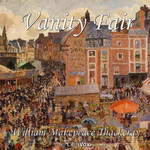 Vanity Fair
Vanity Fair
If you've enjoyed watching the 1998 BBC television miniseries, you'd probably want to renew your acquaintance with William Makepeace Thackeray's 1847 novel, Vanity Fair. However, if you're unfamiliar with what has been dubbed one of the Best 100 Books in English Literature, you certainly have a treat ahead. Miss Pinkerton's Academy in Chiswick Mall in London is where young ladies with ambitions of making a good marriage are sent by their socially aspiring middleclass parents. Two young ladies, Amelia Sedley and Rebecca (Becky) Sharpe are on their way home after completing their term at Miss Pinkerton's... | |
 The History of Henry Esmond, Esq., A Colonel in the Service of Her Majesty Queen Anne
The History of Henry Esmond, Esq., A Colonel in the Service of Her Majesty Queen Anne
A classic Victorian novel and a historical novel rolled into one! Read about court and army life during the reign of Queen Anne – a story of Catholic – Protestant intrigue, and the party which aspired to the restoration of Bonny Prince Charlie. And, a good love story as well. | |
 The Book of Snobs
The Book of Snobs
The necessity of a work on Snobs, demonstrated from History, and proved by felicitous illustrations:—I am the individual destined to write that work—My vocation is announced in terms of great eloquence—I show that the world has been gradually preparing itself for the WORK and the MAN—Snobs are to be studied like other objects of Natural Science, and are a part of the Beautiful (with a large B). They pervade all classes—Affecting instance of Colonel Snobley. | |
 Rose And The Ring
Rose And The Ring
Victorian social satire hiding in a set of children's fairy tales by the author of the classic "Vanity Fair" | |
 Virginians
Virginians
It tells the story of Henry Esmond's twin grandsons, George and Henry Warrington. Henry's romantic entanglements with an older woman lead up to his taking a commission in the British army and fighting under the command of General Wolfe at the capture of Quebec. On the outbreak of the American War of Independence he takes the revolutionary side. George, who is also a British officer, thereupon resigns his commission rather than take up arms against his brother. | |
By: Samuel Taylor Coleridge (1772-1834) | |
|---|---|
 Answer to a Child's Question
Answer to a Child's Question
LibriVox volunteers bring you 21 recordings of Answer to a Child's Question by Samuel Taylor Coleridge. This was the Weekly Poetry project for October 6, 2013. | |
By: Ambrose Bierce (1842-1914?) | |
|---|---|
 Present at a Hanging and Other Ghost Stories
Present at a Hanging and Other Ghost Stories
Ambrose Bierce (1842 – 1914?), satirist, critic, poet, short story writer and journalist. His fiction showed a clean economical style often sprinkled with subtle cynical comments on human behaviour. Nothing is known of his death, as he went missing while an observer with Pancho Villa’s army in 1913/14. (Summaries by Peter Yearsley)The Ways of Ghosts: Stories of encounters with the ghosts of the dead and dying. The spirits of the dead reach out to the living, to pass on a message or to pursue a killer... | |
 The Parenticide Club
The Parenticide Club
Ambrose Bierce (1842 – 1914?), best known as journalist, satirist and short story writer. Cynical in outlook, economical in style; Bierce vanished while an observer with Pancho Villa’s army. Four grotesque short stories about murder within the family, seen through the gently innocent eyes of family members … usually the murderer himself.My favorite murder (00:23)Oil of Dog (20:13)An Imperfect Conflagration (29:32)The Hypnotist (37:14) | |
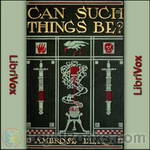 Can Such Things Be?
Can Such Things Be?
24 short stories in fairly typical Bierce fashion - ghostly, spooky, to be read (or listened to) in the dark, perhaps with a light crackling fire burning dimly in the background. Stories of ghosts, apparitions, and strange, inexplicable occurrences are prevalent in these tales, some of which occur on or near Civil War fields of battle, some in country cottages, and some within urban areas. Can Such Things Be? implies and relates that anything is possible, at any time. | |
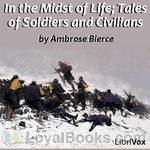 In the Midst of Life; Tales of Soldiers and Civilians
In the Midst of Life; Tales of Soldiers and Civilians
These stories detail the lives of soldiers and civilians during the American Civil War. This is the 1909 edition. The 1909 edition omits six stories from the original 1891 edition; these six stories are added to this recording (from an undated English edition). The 1891 edition is entitled In The Midst Of Life; Tales Of Soldiers And Civilians. The Wikipedia entry for the book uses the title Tales of Soldiers and Civilians. Ambrose Gwinnett Bierce (June 24, 1842 – after December 26, 1913) was an American editorialist, journalist, short story writer, fabulist and satirist... | |
By: Joel Chandler Harris (1848-1908) | |
|---|---|
 Uncle Remus
Uncle Remus
Bearing a striking resemblance to Aesop of Aesop's Fables fame, American author Joel Chandler Harris' Uncle Remus is also a former slave who loves to tell simple and pithy stories. Uncle Remus or to give it its original title, Uncle Remus: His Songs and His Sayings was published in late 1880 and received instant acclaim. The book was reviewed in hundreds of journals and newspapers across the country, leading to its immense success, both critical and financial. “Remus” was originally a fictional character in a newspaper column... | |
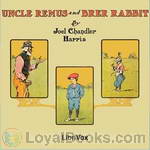 Uncle Remus and Brer Rabbit
Uncle Remus and Brer Rabbit
Uncle Remus' stories feature a trickster hero called Br'er Rabbit ("Brother" Rabbit), who uses his wits to slide out of trouble and gain the advantage over the slower witted other animals, many of whom are trying to eat him. Br'er Rabbit stories were mostly collected directly from the afro-american oral story-telling tradition and are said to be a direct interpretation of Yoruba tales of Hare. This book contains 11 unique stories and was the last one published before the author's death. (Introduction by Phil Chenevert) | |
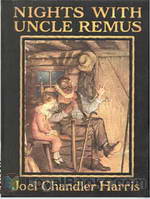 Nights With Uncle Remus
Nights With Uncle Remus
That the little boy loved Uncle Remus and his stories was so obvious that the tale-spinning sessions began drawing additional listeners. Daddy Jack, an old "Africa man" visiting from down-state; Sis Tempy, the strong chief of the mansion's servants; and Tildy, a young and pretty servant-girl - all found their way to Uncle Remus' rude cabin when their duties or interests permitted, to sit around the hearth and hear the wonderful tales of the animals, and foremost among them, Brer Rabbit and Brer Fox... | |
By: Murray Leinster (1896-1975) | |
|---|---|
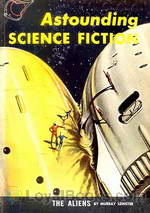 The Aliens
The Aliens
This story starts with space ships scouring the universe in an interplanetary game of tag. The humans know there are “Aliens” out there. But so do the Aliens. As each tries desperately to make the phenomenal discovery, they secretly hope that the other will not turn out to be the enemy. Humans call them “Plumies” because of the feathery plumes they inscribe on silicon-bronze tablets and cairns they have left behind on their intergalactic travels over the last thousand years. The search goes on, till one day somewhere in outer space, a Plumie ship collides with the one manned by humans... | |
 Operation Terror
Operation Terror
An unidentified space ship lands in a Colorado lake. Equipped with a paralyzing ray weapon, the creatures begin taking human prisoners. A loan land surveyor and a journalist are trapped inside the Army cordon, which is helpless against the mysterious enemy. Can they stop the aliens before it is too late? | |
 Space Tug
Space Tug
Joe Kenmore heard the airlock close with a sickening wheeze and then a clank. In desperation he turned toward Haney. “My God, we’ve been locked out!” Through the transparent domes of their space helmets, Joe could see a look of horror and disbelief pass across Haney’s face. But it was true! Joe and his crew were locked out of the Space Platform. Four thousand miles below circled the Earth. Under Joe’s feet rested the solid steel hull of his home in outer space. But without tools there was no hope of getting back inside. Joe looked at his oxygen meter. It registered thirty minutes to live. | |
 The Pirates of Ersatz
The Pirates of Ersatz
Bron is the offspring of infamous space pirates but instead of following in the family footsteps he decides to become an electronic engineer. Unfortunately, every time he tries to get out, something pulls him back in. This is a tongue-in-cheek space adventure along the lines of the Stainless Steel Rat by Harry Harrison. It was originally published in the FEB-APR issues of Astounding Science Fiction in 1959. | |
 This World Is Taboo
This World Is Taboo
Calhoun is an Interstellar Medical Serviceman, and he's needed on Dara. Trouble is: Dara is forbidden. Taboo. And breaking quarantine will make Calhoun a presumed plague-carrier and subject to being shot on sight by anyone from Weald. But hey! If he did the smart thing, we wouldn't have a story!But why are men from Dara shooting at him? | |
 Talents, Incorporated
Talents, Incorporated
Bors felt as if he'd been hit over the head. This was ridiculous! He'd planned and carried out the destruction of that warship because the information of its existence and location was verified by a magnetometer.But, if he'd known how the information had been obtained--if he'd known it had been guessed at by a discharged spaceport employee, and a paranoid personality, and a man who used a hazel twig or something similar--if he'd known that, he'd never have dreamed of accepting it. He'd have dismissed it flatly! | |
 The Hate Disease
The Hate Disease
Dr. Calhoun and his pet tormal Murgatroyd work for the Interstellar Medical Service making routine public health inspections on far-flung colonial planets. When they reach Tallien Three they are greeted with a rocket attack by the Paras, a mutated form of human rapidly replacing the “normals”. The normals think it’s a pandemic of demonic possession but Calhoun has his doubts. If he can keep from turning into a Para, or being assassinated by them he just might figure this thing out. – The Hate Disease was first published in the August 1963 edition of Analog Science Fact and Fiction magazine. | |
 The Runaway Skyscraper
The Runaway Skyscraper
Arthur Chamberlain has problems. His one-man engineering firm is faltering and his pretty secretary Estelle barely notices him. But these problems are put aside when his Manhattan office building falls into the fourth dimension. Madison Square is filled with wigwams and it’s up to Arthur to engineer a way to make his building to fall back to the future. – The Runaway Skyscraper first appeared in the February 22, 1919 issue of Argosy magazine. | |